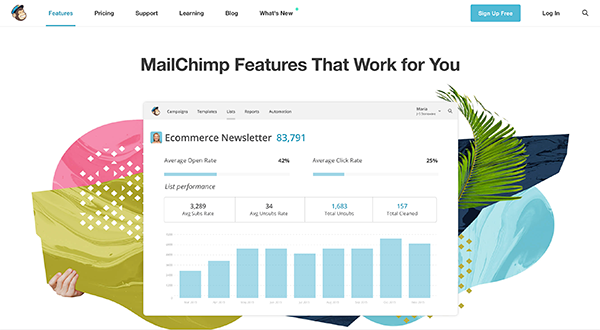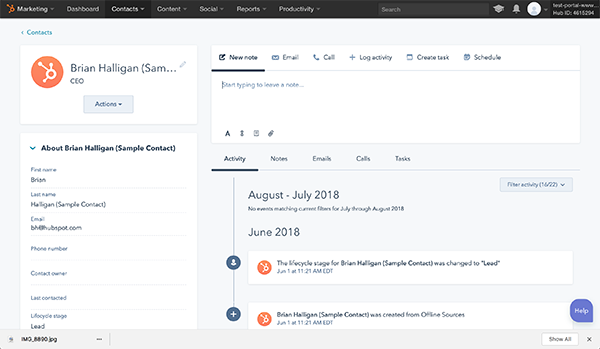A Stepwise Approach to Tackling CRM and Marketing Automation
About half of all companies are using marketing automation software. Many, despite recognizing the potential of the technology, are reluctant to invest in it and continue to utilize rogue, manual systems to meet the bulk of their marketing and business development needs.

Particularly in the case of professional services firms, with an emphasis on the legal sector, it’s a risky proposition—and, potentially, a costly one—to assume key personnel will adopt marketing automation. With practitioners often divided and distributed by distance, area of expertise, seniority, methodology, and otherwise, adopting a new behavior can represent a Sisyphean task. However, whether the obstacles are cultural, financial, technological, or informational, law firms must consider the benefits of marketing automation. After all, research indicates that businesses that use marketing automation to nurture prospects enjoy a 451% increase in qualified leads.
Implementing change can be a challenge. But, in the case of marketing automation, it’s hard to ignore an efficiency-driving money-maker. So let’s consider a brief primer on the topic.
What Is Marketing Automation, and Why Should We Care?
The term “marketing automation” refers to software that executes marketing-related actions. It can apply broadly to emails, social media, and other website actions, and it centers on activities that serve to enhance customer relationships. Email marketing software is one example. Customer relationship management software is another.
In the case of customer relationship management (CRM), companies can utilize the software to manage contacts, track conversations, and shorten business development cycles. With a little bit of data entry, they can save time searching for valuable information, be smarter during client-facing conversations, and convert leads into retained clients. It can also play a vital part in ensuring continuity and preserving institutional memory, particularly when employees initially involved in a client relationship leave the business.
Anna Shapiro of Boston-based family law firm Shapiro Legal, for example, found CRM to be “a lifesaver in that [her firm] can now quickly determine and separate what is intra-office communication and what is billable client hours.” According to Shapiro, the firm’s daily billable hours increased substantially after the implementation of its CRM system.
Of course, implementing a CRM platform and using it optimally is a huge undertaking. But taking a stepwise approach can make it easier.
Define Objectives and Goals
A clear vision is important when installing and integrating any new system. First and foremost, ask yourself a few questions: What are our objectives and goals? Are you simply seeking to track relationships, or do you need to better manage a complex, multi-step sales process through improvements?
If a simple repository to store contact information is what you’re seeking, your needs may be different than if you have visions of leveraging automated email follow-ups, reminders, and prioritization tasks.
Identify User Groups
Taking your objectives and goals into account, identify user groups across the organization and consider who will be primary and secondary users. Primary users at law firms are typically marketing and business development personnel. These individuals will likely manage campaigns and pursue new business, but they also may administer the platform.
Attorneys, upon whose relationships and expertise firms depend, may also be users. However, they may not require the same level of access as admin-level users. Creating specific user groups allows you to create user profiles (personas), which ultimately makes managing all firm operations much easier. That is, as long as everyone’s on board.
Ensure Successful Adoption
User adoption is a hurdle to most information technology projects, and marketing automation software is no exception. Given the roles of different user groups, preparation and training for each may also vary. An organized change management plan can make or break your CRM rollout.
Before investing in software, determine training requirements to ensure successful adoption. Begin by developing a plan for rolling the software out to key personnel in the firm over time, working out kinks with those that have the time (and tolerance) to scale the learning curve. Who are the mavens, connectors, and salespeople within your firm? Get these key influencers on board first.
Maintain Records and Processes
50% of companies that use automation cite data hygiene as a primary concern. Without records of prospect and client contact information, details on relationship leaders, and traces of past conversations, your firm lacks the historical context and organization to automate marketing processes.

Once users understand how to use marketing automation, expectations may be set, discipline implemented and adhered to, and records accurately kept and updated. Contact reminders, surveys, or information requests sent through email automation platforms like MailChimp are dramatically more likely to be clicked when they’re personalized and precisely targeted.
Integrate Your CRM With Other Systems
To achieve efficiency at scale, integrating your CRM with the rest of your marketing stack is critical. Whether you’re using separate platforms for managing relationships, email marketing campaigns, and pipeline management or using a single platform, the effectiveness of your marketing program depends on how seamlessly data flows within and among these systems.

Recording every client interaction (especially early in the conversion cycle before they’re billable clients) can be a tedious task in the absence of seamless integration. Large amounts of data are recorded from different places, leading to wasted data entry and migration hours while simultaneously increasing the likelihood of errors. HubSpot, Vuture, Concep, InterAction, MailChimp, and other popular CRM platforms for the legal sector may all be integrated with one another, and doing so is crucial in order to automate processes, save time, and keep data clean. Ensure your website content management system, whether RubyLaw or Sitecore, is also integrated with this stack for end-to-end custom-centric marketing and personalization.
Test, Evolve, Repeat
Nobody gets it right on the first try. Every firm is different, every tool set is different, and every marketing team is different. Chances are your goals are different, too. Plan to iterate. Do some basic tests to gain user adoption and support for the initiative. Evolve your tests based on the data received from the CRM. Then repeat the process.
As an initiative builds, you should be able to show increasingly impressive results, which then fuel further expansion of your marketing automation program (and revenue). The results may show in various forms: increased client engagement with the firm, increased interest and calls to your firm (be sure to track these!) on matters of relevance, and, ultimately, an increase in firm matters and billable hours.
Marketing automation isn’t easy to set up and roll out across even a small firm, and this is one reason why the industry has been so slow to adopt it. It can be done, though, and it will be—by your competitors. Firms that adopt marketing automation early will see the biggest gains. If you’re late, you may risk losing your business to them.
Jaron Rubenstein is founder and president of RubensteinTech, an enterprise software firm that harnesses technology and deep sector expertise to transform leading law and professional services firms.
Reprinted with permission from the June 15, 2017 edition of Law Technology Today.

